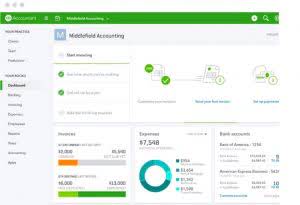
Process 1 involved preparing the raw materials for printing, process 2 is the actual printing, and process 3 is packaging the planners to be moved to finished goods inventory. Costing is simpler in this system because rather than having to prepare a costing sheet for many products, we only need to do costing for three departments or processes. Process costing is appropriate for companies that produce a continuous mass of like units through series of operations or process. Also, when one order does not affect the production process and a standardization of the process and product exists. However, if there are significant differences among the costs of various products, a process costing system would not provide adequate product-cost information.
Best Account Payable Books of All Time – Recommended
If the equivalent of 100,000 units were processed in June, the per unit costs will be $1.50 for direct materials and $2.25 for conversion costs. These costs will then be transferred to second department where its processing costs will be added. A process costing system accumulates costs when a large number of identical units are being https://www.bookstime.com/articles/enrolled-agent-salary produced. In this situation, it is most efficient to accumulate costs at an aggregate level for a large batch of products and then allocate them to the individual units produced. The assumption is that the cost of each unit is the same as that of any other unit, so there is no need to track information at an individual unit level.
Do you own a business?
Throughout the process it is stirred, cracked, and blended so that it is not possible to trace a tank of gasoline back to a specific barrel of oil. Abnormal gain exampleThere is a heat wave and staff have eaten less chocolate. Total cost of pigment dispersing department which comes to be $36,250 ($10,000 + $1,250 + $25,000), is transferred to let down department. process costing Our mission is to empower readers with the most factual and reliable financial information possible to help them make informed decisions for their individual needs. The Coca-Cola Company is one of the world’slargest producers of nonalcoholic beverages. According to thecompany, more than 11,000 of its soft drinks are consumed everysecond of every day.
Direct Materials Costs

For instance, further material required to complete the process is 20%. A simple method that avoids manipulation of the percentage of completion is to use a standard percentage that is never changed in any reporting period. Thus, management could potentially shift into a new form of reporting fraud if new controls are placed elsewhere in the system. Consider a manufacturing facility of the business for garments manufacturing company.
Calculate the process costing in each department.
In this case, we estimate the average level of completion of all work-in-process units, and assign a standard direct labor cost based on that percentage. We also assign the full standard labor cost to all units that were begun and completed in the period. If there is a difference between the actual direct labor cost and the amount charged to production in the period, the difference can be charged to the cost of goods sold or apportioned among the units produced. As one of the process costing system examples, let’s look at a supposed company, ABC Inc, that produces wire rods, that pass through multiple production departments.

Conversion costs are the costs involved in converting the direct material into the product and therefore are direct labor and manufacturing overhead. When a company mass produces parts but allows customization on the final product, both systems are used; this is common in auto manufacturing. Each part of the vehicle is mass produced, and its cost is calculated with process costing. However, specific cars have custom options, so each individual car costs the sum of the specific parts used. Instead, accountants compute the cost per unit by first accumulating costs for the entire period (usually a month) for each process or department. Second, they divide the accumulated costs by the number of units produced (tons, pounds, gallons, or feet) in that process or department.

- It does take into account the normal losses of production depending on the process and allocated to the costing of a product.
- For instance, further material required to complete the process is 20%.
- For example, it would be impossible for David and William to trace the exact amount of eggs in each chocolate chip cookie.
- Examples of the industries where this type of production occurs include oil refining, food production, and chemical processing.
- Understanding the company’s organization is an important first step in any costing system.
- The OpenStax name, OpenStax logo, OpenStax book covers, OpenStax CNX name, and OpenStax CNX logo are not subject to the Creative Commons license and may not be reproduced without the prior and express written consent of Rice University.
XYZ Inc makes paper products from wood pulp wherein raw materials go through a production cycle that ends with the production of identical reams of paper. Assume in the month of August, the company completes 150,000 reams of paper, spending raw materials total of $50,000, $70,000 in direct labor, and $30,000 for overhead. This means that in this process costing system example, the company incurred a total cost of $150,000 for the 150,000 reams of paper that it produces. Hence, the cost per unit will be calculated as $1 (total cost of $150,000/150,000 reams of paper). In a process cost system, costs are maintained by each department, and the method for determining the cost per individual unit is different than in a job order costing system. Rock City Percussion uses a process cost system because the drumsticks are produced in batches, and it is not economically feasible to trace the direct labor or direct material, like hickory, to a specific drumstick.

Just-In-Time: History, Objective, Productions, and Purchasing
- A batch is defined as each time a quantity of materials is added to the first point of production to keep the workflow going.
- The company then combines these reports to analyze the applicable total cost of the product.
- Further, the process of the computation is easy to understand and flexible for making the changes.
- There is no proper KPI (key performance indicator) for each department to follow.
- Using the weighted-average method, prepare the company’s process cost summary for the month.

